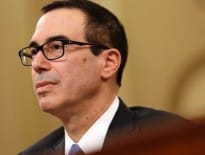
Malia Lazu
The median wealth of white families in America is 10 times higher than that of black families ($171,000 versus. $17,150) according to the Federal Reserve’s Survey of Consumer Finances. This wealth gap is not an outcome based on the failures of an individual or their community failures – minority markets have $3.9 trillion of spending power – but rather an outcome of 400 years of systemic exclusion. Wealth is created through ownership and most Americans begin the wealth generation by owning a home and/or small business. This disparity gap is not caused by a bug in our system but rather a prominent feature.
To provide some historical context, Freedman’s Bank was an institution created in 1865 to support the economic growth of newly freed people. The bank maintained 37 offices in 17 states and deposits peaked at $57 million; however it was all destroyed by the fraud perpetrated by a white board member who “approved” a large, unsecured loan that failed. The government declined to step in and all of the bank’s 70,000 depositors lost their money.
Another example of the systemic denial of wealth–building services to Black and brown communities is housing segregation and redlining, which excluded this community in two ways. First, they made it nearly impossible to get a mortgage if you were a person of color. And if you were one of the very few who could, you were not allowed to buy in neighborhoods that had value. Because most wealth sits in American homes, the creation and enforcement of these policies impacted minority wealth creation for nearly 10 generations.
Another more recent issue is that products and services for diverse consumers have often sat with charitable organizations and banks would only support these consumers via nontraditional banking for Community Reinvestment Act or tax credits. However, minority depository institutions, community development financial institutions and community development corporations have arisen to provide financial services for traditionally underserved communities. These institutions serve as an entry point for small businesses and homeownership for many minorities, and more importantly, are helping the financial industry redefine risk and mitigate bias in the lending processes.
NACA is a great example of a successful, nontraditional community housing program which has provided character-based lending for over 30 years. They have processed over 70,000 mortgages with a 0.01 percent foreclosure rate. Runway Project, a new CD/loan product to support Black and brown businesses conducts a more equitable underwriting process, by engaging in community underwriting for their microloans. Their first pilot deployed 34 microloans in Oakland with a 100 percent repayment rate. Please note, neither of these approaches should not be confused with charitable microloans sponsored by foundations.
However, the big issue at hand is that nontraditional financial institutions will not close the wealth gap. Why? Three simple words: systems, people and capital. Banks claim these products can’t scale because of the impact on overhead costs consistent with entering a new and “risky” market , but given they already have substantial product delivery infrastructure like branches, and that nontraditional financial institutions have a proven model to find these customers, it would seem the ability to offer products and scale profitably is easily within reach if they would join forces.
Nontraditional financial institutions are the innovators and inventors of accessible banking and can help banks level-up their products and provide an honest underwriting process rather than the traditional checklist fraught with bias that eliminates good customers. Developing products with these organizations will limit risk to banks and open doors to new customer bases in a responsible way. Communities are not unbankable, but it seems banks are uninterested in figuring out how to deliver the financial products they need to succeed.
Any historian or economist knows the concentration of wealth amongst a few is not sustainable for a thriving democracy or economy. Ownership is core to our story, not banking a significant, soon–to–be majority population leaves money on the table for banks in the short term and stunts our economy in the long term. A healthy, growing economy starts with working and middle classes that can begin to see the long–term benefits of their hard work. Banks have the neighborhood infrastructure to get it done.
Malia Lazu is a lecturer at the MIT Sloan School of Management and the former Eastern Massachusetts market president and chief experience and culture officer at Berkshire Bank.






